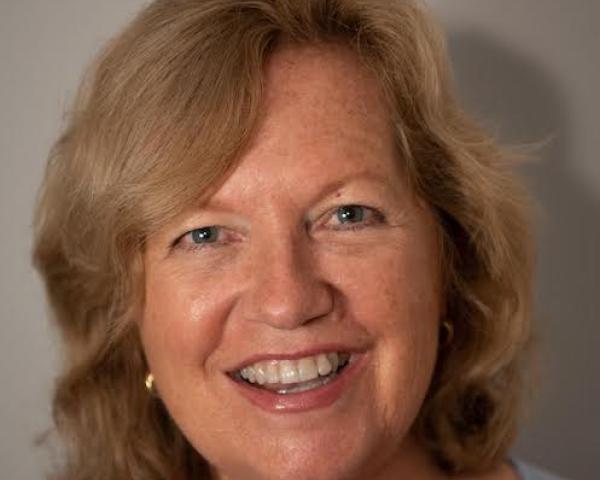For more than a century, carmakers and automobile insurers have largely kept to their own lanes. That was before data ruled. In 2022, data and technology have inspired the automobile industry to get more involved in the insurance side of the ledger, prompting an increase in the number of inter-industry partnerships and more.
For auto insurers, partnerships and other steps car manufacturers have taken to edge their way into the insurance industry offer a way to gain and maintain market share in the highly competitive personal auto space, AM Best Senior Director Richard Attanasio said. Offering products directly and at the point of a vehicle sale brings carriers an avenue of distribution with potentially lower expense levels and additional insight that can help set rates, he said.
Insurers working closely with manufacturers agree that they benefit from access to new data on driving behaviors, and seeing how they affect losses as automation advances and interest in electric vehicles surges. And carmakers that establish their own insurance operations can acquire a “natural feedback loop on driving patterns, effectiveness of safety features, etc., which allows them to further hone their product to meet customer expectations,” Attanasio said.
Points of entry vary by manufacturer and even by country. For instance, Tesla progressed from broker to fronting agency partner to insurance subsidiary. Swiss Re and BMW collaborated to craft a vehicle-specific insurance rating parameter for primary carriers globally to calculate premiums. Some carmakers, such as Toyota, are building out insurance brokerages. Others teamed up with carriers on embedded products.
Toyota overtook Ford as the leading car brand in the U.S. last year, based on 1.9 million vehicle sales, according to market and consumer data company Statista. Ford had 1.8 million, followed by Chevrolet's 1.5 million. Nationwide has partnered with the top two, as well as startup electric “adventure” vehicle Rivian.
Nationwide gains knowledge and strengthens trust by expanding original equipment manufacturer partnerships, said Senior Vice President of Corporate Development Angie Klett, creating “a relationship within their ecosystem that builds upon the customer having the say, the power and determining the path of an experience.” Carmakers and insurance partners today take a customer-first approach that varies from company to company, Klett said. Choose a manufacturing partner carefully, she advised, with an eye on aligning values and strategies.
Each side decides direction for the insurance product, such as if, how and when to embed insurance in the buying process. Klett said embedding is most strategic for manufacturers with a niche market, where customers think a company like Tesla or Rivian has a better handle on the needs of their vehicles' owners. “They're direct-to-consumer OEMs. The buying, the servicing is different. It's not the same as a Ford or Toyota,” Klett said.
Specialized manufacturers, such as Rivian, are notably invested in streamlining the entire car-owning experience, said Sarah Jacobs, Nationwide vice president of personal lines product development, and will lean into the process.
See also: 3 Tips for Improving Customer Loyalty
Toyota Financial Services is an owner of independent property/casualty insurance agency Toyota Insurance Management Solutions (TIMS), which distributes product from multiple carriers. Will Nicklas, president of Toyota Insurance, acknowledged manufacturers' earlier reluctance to enter the highly competitive auto insurance market in the U.S.
“But I think when we decided that cars were going to be connected, and there were going to be a lot more services that we could provide to customers, it made a lot of sense,” he said. “When you think about how insurance plays a role in car ownership, every six months, maybe every 12 months, a customer is renewing an insurance policy. We saw a gap in the ownership experience.”
Nicklas thinks of TIMS as “this new, connected tissue, or this glue that's bringing these two industries together” for a “really powerful collaboration.”
According to the TIMS website, working with Toyota companies and external partners allows the broker to harness data and technology to “improve safety and convenience and save customers time and money.”
The Counterpoint
Some insurance industry experts think the partnerships are helping carriers and manufacturers, but they doubt Tesla will inspire other carmakers to become underwriters. They cite the complexity of regulatory approvals, particularly in the U.S., and profit and loss swings in auto, even among large, legacy insurers.
Risk Information Inc. Editor Brian Sullivan put it bluntly: “There is no advantage at all to a traditional auto manufacturer owning a traditional insurance company.”
Jacobs said regulatory work can't be underestimated. Insurance is “very challenging to break into.”
Barriers are a little easier to clear in some global countries, particularly with a carrier partner. Volkswagen Autoversicherung AG was founded in 2013 as a joint venture between Allianz Versicherungs-AG and Volkswagen Financial Services AG. Volkswagen Autoversicherung AG offers auto insurance in Germany as a primary insurer. In about 30 other countries or markets, VW is an insurance broker, the company said.
“The technology of the cars, especially the car data, gain an increasing importance for the development of our motor insurance products,” a Volkswagen spokesperson said. “For example, in Germany, the safety features of the cars have a direct influence on the motor insurance pricing.” The company hopes to gain telematics experience and integrate insurance offers into VW on-board systems.
Brandy Mayfield, senior vice president and managing director, digital economy for Aon, said partnerships between manufacturers and insurers offer an attractive middle ground.
“As manufacturers build differentiated products, they want to make sure carriers have capacity to insure newer/different technology. Manufacturers also want to minimize friction in the insurance purchase journey and create continued revenue streams from their buyers,” she said.
On the other hand, she said, “shifting from acting as a broker to an insurer presents a significant leap in terms of regulatory complexity, capital intensity and moving the brand into a new category with mixed views from consumers.”
“For original equipment manufacturers to make that investment, there will have to be a clear opportunity to differentiate from traditional insurers or meet truly unmet needs in the marketplace,” she added. “Carmakers must determine what they're solving for by setting up their own insurance structure: more clients, a differentiated insurance product, etc. Many also want to capitalize on profits from the insurance space.”
Carriers can grow a book for certain auto types more rapidly than in the traditional market, she said. Customers may get improved access to parts and repair services, increasing satisfaction with insurers and carmakers. Doubly important for newer vehicles with limited production is “a network to quickly obtain parts and repair,” Mayfield said.
Tesla's push into insurance was reported to be motivated by reducing the cost of ownership. Repair costs ran higher because fewer technicians are familiar with the connected, electric vehicle. Tesla was known for supply chain challenges even before the pandemic, extending repair times.
“Other manufacturers could take a similar approach and offer insurance directly,” Attanasio said, although it would require a significant amount of industry knowledge and infrastructure, including a high level of product/pricing sophistication and policy administration and claims capabilities.
Entrepreneur Elon Musk drew distinctions between how automaker Tesla Motors' insurance operations cover auto risk compared with the traditional insurance industry, which he said suffers from too many players extracting part of the premium along the insurance value chain. “Insurance is quite significant,” Musk, Tesla's chief executive officer, said recently. “The car insurance thing is a bigger deal than it may seem. A lot of people are paying 30%, 40% as much as their lease payment for the car, in car insurance.” Tesla said its real-time insurance is based on measurable driving behavior.
Technology Roots
Twenty-one years ago, when OnStar was collecting vehicle usage data in 34 of General Motors' then-54 models, a spokesman said the onboard automobile information system was working on partnering with insurers. OnStar's inducement included cost savings because insurers wouldn't need to develop data-gathering equipment and then get it into vehicles.
That was three years before Progressive Corp.—which has since become the third-largest private passenger writer in the U.S., according to AM Best data—piloted a usage-based insurance program to research driving habits. In 2008, Progressive started offering customers the option of tying driving data to premiums.
Telematics adoption lagged through the years even as the ease improved from the early days, when consumers were required to install dongles to access UBI. Now that smartphones are common, telematics options from multiple carriers are just an app away. The amount of information an insurer can gather comes close to carmaker-installed monitoring systems, Sullivan said.
Mayfield, however, raised a prime consumer concern: data privacy. “Dealership agents should be prepared to answer a similar line of questioning from consumers: What information from their vehicles will manufacturers plan to share with insurance companies?”
That's a problem for carmakers because the distribution system encourages salespeople to sell vehicles as quickly and with as little friction as possible, Sullivan said. “All a salesperson wants is to get the car off the lot. Anything that might get in the way of closing the sale immediately will be ignored by sales and finance people in dealerships. Insurance is far more complicated than selling rust protection add-ons.”
See also; 5 Trends to Watch in Commercial Auto
Connected carmakers are already collecting enormous amounts of data on how vehicles are driven and maintained. That can give them an edge, albeit a minor one, as telematics becomes more widely accepted, according to Sullivan, even as many car buyers opt to retain a degree of privacy, or at least the right to decide when and who has access to their personal movements and habits.
Ford affiliate American Road Services Co. offers Ford Insure, underwritten by Nationwide Mutual Insurance Co. and its affiliates. Ford Insure customers employ FordPass App (compatible with smartphones) and FordPass Connect (an optional feature on some of the carmaker's models) on newer vehicles to transmit data on miles driven, hard braking and accelerating and stop-and-go and night driving.
Ford's insurance messaging mirrors that of partner Nationwide's for the general public. “While that discount is being calculated, you automatically get a 10% discount just for signing up,” Ford Insure notes on its website, promoting auto insurance discounts as high as 40% and potential additional savings by bundling other vehicles, home or pet insurance with the auto coverage.
Jacobs thinks 70% of new customers will opt in to UBI plans within five years, based on current trends.
Sullivan isn't surprised, seeing the day when drivers who decline to use telematics are presumed to be high-mileage or high-risk policyholders. Even if they're not, they will pay more for the privilege of privacy, he predicted.
This article initially appeared at AM Best.






